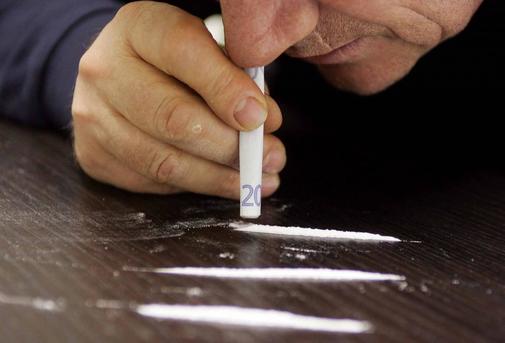Cocaine is the queen of the most consumed drugs in the cities of southern and western Europe and Barcelona takes the cake in our country. One could even say that he has won the first international position in the use of this substance, surpassing Zurich and Antwerp.
In addition, in the ranking of ecstasy (led by the Netherlands), the Catalan capital occupies the eighth place, is in the thirteenth place in the consumption of methamphetamine and appears in the number 33 of 65 as far as amphetamines are concerned. This follows from an ambitious macro-study that has managed to analyze the wastewater of 120 cities belonging to 37 countries. Neither more nor less than those generated by 60 million people between 2011 and 2017 .
Amphetamines, methamphetamines, ecstasy and cocaine. This is the 'table' investigated by several European institutions, among which is the Higher Council for Scientific Research (CSIC). Barcelona stands out in this area at European level, together with Antwerp, Amsterdam, Zurich and London, and also excels in the national territory. Of the cities analyzed in Spain (Barcelona, Santiago de Compostela, Molina de Segura, Valencia and Castellón ), Barcelona is the one that most cherished shows the whole canvas. In fact, it doubles the statistics that other populations have, according to the article just published by the Addiction magazine.
"Many of the data go along the same lines as traditional European statistics," explains Cristina Postigo, a researcher at the Institute for Environmental Diagnosis and Water Studies (IDAEA) of the CSIC. The great differences that exist in the consumption of psychoactive substances between European countries are confirmed . For example, "in Belgium and the Netherlands there is an important consumption of cocaine and amphetamines, a substance that has become popular in the Nordic countries. In southern and western Europe (Switzerland, Italy, France, United Kingdom and Spain ), the dominant drug is cocaine. As for methamphetamine, although its use is lower than that of the other substances studied, they rebound in eastern countries (Slovakia, Czech Republic and eastern Germany) and is expanding to the north and to the center of Europe. " On the other hand, the research has corroborated that the ecstasy has experienced an increase throughout the six years analyzed.
Based on the results, the analysis through wastewater demonstrates its potential as a complementary tool for estimating drug use. As Postigo points out, "this methodology was first applied in 2011 and since then, many research groups have used it and the European Drug Observatory has validated it as a complementary tool ." According to the expert, "it allows to evaluate a pattern of consumption at the local level and much faster than population surveys. In a month, even less, results can be obtained. No need to wait a year."
How? Water is collected at the entrance of a wastewater treatment plant (50 milliliters every 10 minutes over 24 hours is a sample). It is taken to the laboratory, "we process it and analyze the concentration of groga or the metabolites that are excreted in the urine." This is how the amount of drug consumed by the population is estimated. " It should be noted that all the data obtained correspond to measurements of one week per year," says Iria González Mariño, a researcher at the University of Salamanca and leader of the study in Spain.
Unattended area
In parallel, The Lancet magazine echoes a report that will be presented at the congress 'Lisbon Addictions 2019', in which a new international approach is requested to address drug use, through policies that adapt more quickly to the New drugs and their patterns of use.
These are five studies that reflect the opioid crisis, the expansion of cannabis legalization , the increase in problems caused by stimulants and the greater number of psychoactive substances that are being identified. According to existing estimates, in 2017, about 271 million people between 15 and 64 years old (5.5% of the population) had used drugs the previous year and between 35 and 72 million people suffered from consumption disorders of this type of substances worldwide. Specifically, in 2018, one in 1,000 people consumed cocaine and seven in 1,000, amphetamines , with an estimate of 16% and 11% of people who respectively experienced dependence.
"Globalization and developments in information technology have transformed the availability and use of drugs, so public policy and professional discourse must adapt to these new challenges, " says Louisa Degenhardt, a professor at the National Center Research on Drugs and Alcohol (Sydney, Australia).
In a linked comment, the magazine's editors, Pam Das and Richard Horton, warn that "the medical community must defend the rights of people with drug use disorders to receive evidence-based care that respects their rights, minimizes harm. and provide a stable and biased base from which they can achieve a positive change in their lives. " The authors emphasize the need for investments in this "unattended" area .
According to the criteria of The Trust Project
Know more- Science and Health
- Health
Nobody paid attention to Izan's giant mole ... and died of cancer at age eight
Health A senior office 'ties up' its place with a leave to which it is not entitled
HealthHealth will finance the HIV preventive pill after having proven its "effectiveness" in other countries

